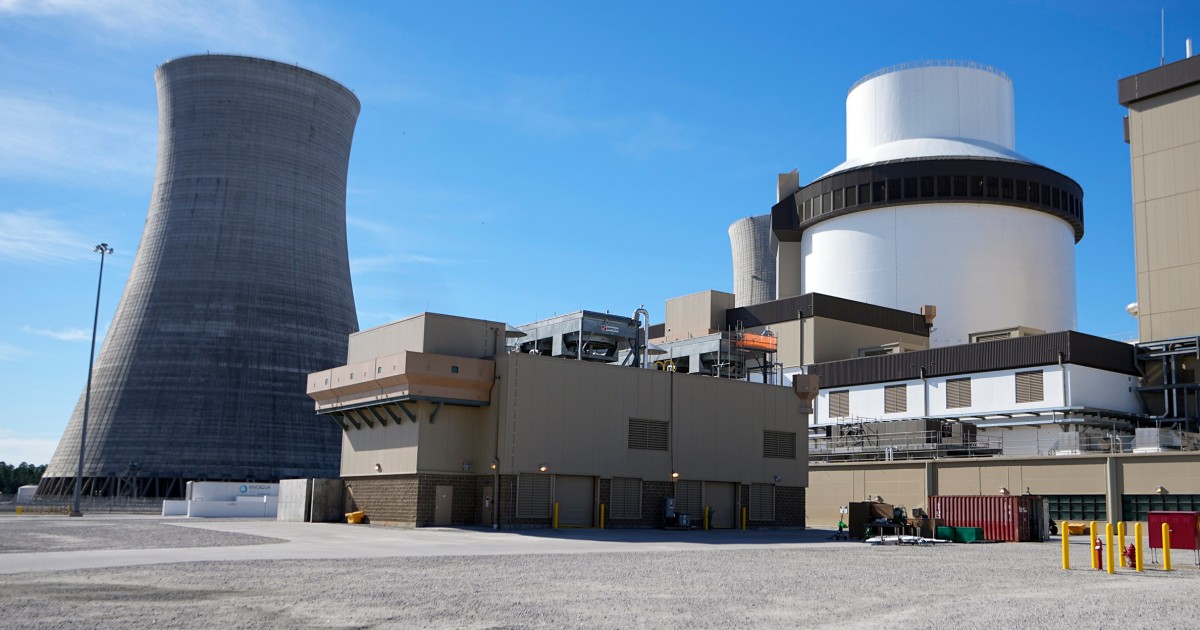- cross-posted to:
- georgia@lemmy.world
- cross-posted to:
- georgia@lemmy.world
First U.S. nuclear reactor built from scratch in decades enters commercial operation in Georgia::ATLANTA — A new reactor at a nuclear power plant in Georgia has entered commercial operation, becoming the first new American reactor built from scratch in decades.



Not trying to be “difficult,” but isn’t that what people thought about coal/oil at first? I understand that the scale is different, but it still needs to be a stop gap as opposed to a long term plan.
Spent Nuclear Fuel, unlike coal or oil, can be recycled to a certain extent (this is done in places like France but not the US). If we recycled all of the spent fuel, we’d potentially have a thousand years (give or take) of fissionable fuel. Plenty of time for us to get fusion running so we can completely wean ourselves off petroleum energy generation.
billions if we start using thorium
So far the problem, if I understand correctly, is all thorium reactors are molten salt reactors. The issue there is, we still haven’t solved the metallurgy problems of dealing with the corrosive salt. It destroys all the pipes. We have slowed it down, but not enough to go production with.
How fast are talking. Like replace the pipes evety year or they breakbdown in months
I don’t have an answer for that question unfortunately
By that time I’m hoping we’d be using Deuterium-Tritium fusion for all our needs. Or go full scale megaengineering and Dyson Sphere some star somewhere.
Why do you think we need nuclear to transition fully off petroleum? Renewables with storage are cheaper today for new build power, let alone in another 20 years. They continue to get cheaper and more efficient quite rapidly.
Because renewable depends on the weather, while nuclear doesn’t.
A mix of renewable is absolutely a good thing to do, but still, having a constant source of energy mixed with that ensure stability.
The storage problem is the limiting factor. Batteries are wildly too expensive, pumped storage takes a huge amount of space and isn’t feasible in most places due to geography, and hydrogen is not nearly there yet technologically.
If we switched entirely to wind and solar we would need to accept total shutdowns when we had a bad run of weather.
Removed by mod
Adding to what others have said here, nuclear is great for base load consumption. Use the renewables to supplement during peak hours where load variability is the greatest.
Sure, you could connect renewables to batteries / accumulators for times when they are not available (i.e. no wind, no sun) but this doesn’t give a very good consistent base load. A nuclear plant that is 1 MWe will always give 1MWe if it is up all the time. I’m not saying here that batteries aren’t a good option, just that they aren’t the optimal solution.
Another thing to consider is resistive transmission losses. Connecting long cables from, say offshore wind farms or areas of high wind density, to electrical substations long distances away makes delivering the electricity more inefficient. Granted, having it is better than not (nobody likes brownouts). But engineers try to take all of these into consideration when working on the regional power grid.
I think the issue is batteries, which are expensive and require rare earth metals which often have environmentally costly acquisition methods. Perhaps an optimal solution would be a baseline of nuclear power, and then enough renewables to meet peaks in demand. That way we have plenty of stable energy while minimizing nuclear risks.
When you get into power say a whole large city the batteries cost more then the solar panels. Especially in more polar places like Juno Alaska where you need to store a surplus of power for months. plus batteries degrade over time so they would have to be replaced. That’s part of the reason why ion flow batteries are being researched, you can just drain them and replace the fluid*.
I didn’t know about those. I’ll have to look more into it. Thanks!
You’re conflating leftover dregs of Pu-239 (about a 10-15% boost in energy per fuel input) with non-fissile material like U238. Breeder reactors required to use the second have never been used commercially in breeding mode.
You’ve either fallen for or are intentionally spreading a lie.
What lie am I spreading? Conventional Light Water Reactor Nuclear Fuel (5-6% U-235 w/t%) can be recycled. This can be done even without using breeder reactors which operate through fast fission of U-235
Yes the plutonium can be stripped out along with the other transuranics, and it does pose a proliferation risk (separate issue), but it definitely can be recycled. France reprocesses their fuel.
Edit: typo correction
Ah. So intentional then. You’re trying to pretend extracting the <0.7% left over U235 and Pu239 (for a 10-15% increase in U235 fuel economy) is somehow fissioning U238.
I don’t understand what you’re trying to say here. Reprocessed fuel does not imply that we’re now fissioning U-238. That takes place in a completely different energy regime (fast fission vs. thermal). Light Water Reactors and fast reactors operate differently, with different fuels. LWRs in commercial operation use slightly enriched U-235. There is no fissioning of U-238 other than the very small amount of spontaneous fission which is negligible compared to contributions from thermal fission in an LWR. The Six Factor formula governs criticality reactions, and these terms differ for both reactor types. The nuclear cross sections are fundamentally different between these energy regimes.
Reprocessed fuel is what it implies, recycled processed LWR fuel, stripped of the fission products that built up as the fuel underwent burnup in the core. If this were some sort of pretend activity then I guess the entire reprocessing back end of the nuclear fuel industry is fake.
I don’t appreciate the personal attacks, so if you have nothing constructive to say, good day to you sir slash madam.
You’re still trying to spread the “90% of nuclear waste is recyclable” myth, but now you’ve retreated to the bailey of “getting 10% more energy is technically getting something out of it so saying it is recyclable is totally true even though this has no impact on mining or the dangerous parts of waste!!” You’re also pretending it magically makes the Pu240 and Am241 go away.
Reprocessing yields a small fraction of leftover fissile material. It is in no way characterisable as recycling.
The strategy is a very boring and tiresome propaganda move that is part of the Duke Energy and Rosatom astroturfing playbook. As is the “who me? I couldn’t possibly be slyly trying to imply nuclear waste is actually fuel” act.
They never said that it’s 90% recyclable. They said it can be recycled ‘to an extent’. You’re projecting.
The myth they are dog whistling is just that. You can see it repeated everywhere the topic comes up and where they tried to conflate it with breeding. The method of lying is called paltering.
In reality reprocessing has no significant impact other than leaking Cs, Kr and Tc everywhere, increasing the volume of waste so it’s harderto handle and raising costs.
U-238 is largely stable and has the consistency of metal, making it easy to store or sequester away. Most natural deposits of Uranium are U-238.
Additionally you can make a breeder reactor that bombards U-238 to make U-239 which has a half life of 23+ minutes and decays into Plutonium-239 which can be used in nuclear power generation.
Not sure what you’re even trying to say with the first bit. It’s completely irrelevant
No breeder reactor has ever produced enough fuel to run on and extracted it. Breeder programs get as far as half of a proof of concept and then run out of funding on the actually hard part.
If we can pull off hydrogen fusion without crazy radioactive isotopes I reckon we can go on for a little while without having to worry about running out of hydrogen in the solar system / galaxy
Instead we only have to worry about immediately running out of beryllium for breeding blankets just on the demo reactors.